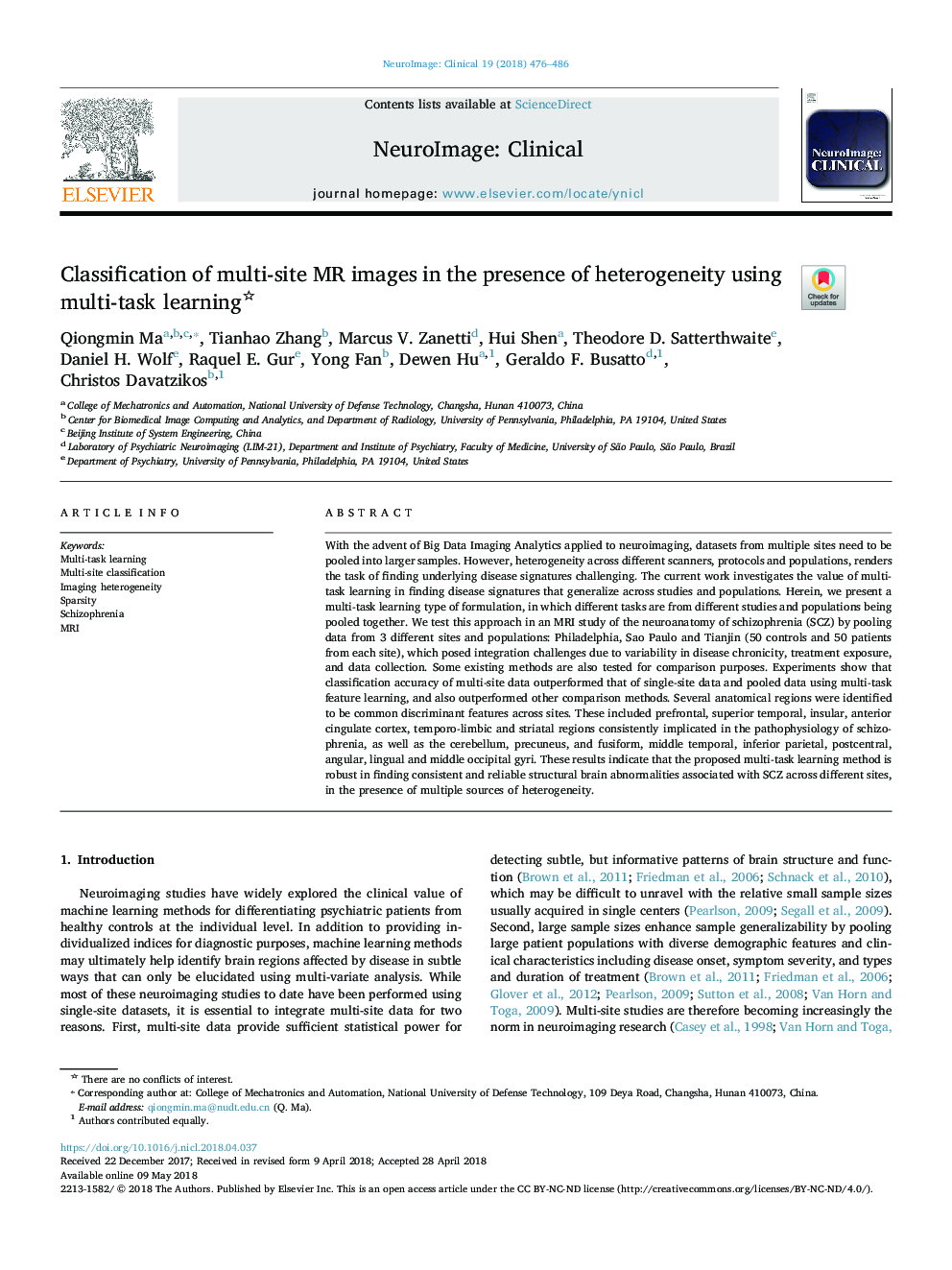| Article ID | Journal | Published Year | Pages | File Type |
|---|---|---|---|---|
| 8687687 | NeuroImage: Clinical | 2018 | 11 Pages |
Abstract
With the advent of Big Data Imaging Analytics applied to neuroimaging, datasets from multiple sites need to be pooled into larger samples. However, heterogeneity across different scanners, protocols and populations, renders the task of finding underlying disease signatures challenging. The current work investigates the value of multi-task learning in finding disease signatures that generalize across studies and populations. Herein, we present a multi-task learning type of formulation, in which different tasks are from different studies and populations being pooled together. We test this approach in an MRI study of the neuroanatomy of schizophrenia (SCZ) by pooling data from 3 different sites and populations: Philadelphia, Sao Paulo and Tianjin (50 controls and 50 patients from each site), which posed integration challenges due to variability in disease chronicity, treatment exposure, and data collection. Some existing methods are also tested for comparison purposes. Experiments show that classification accuracy of multi-site data outperformed that of single-site data and pooled data using multi-task feature learning, and also outperformed other comparison methods. Several anatomical regions were identified to be common discriminant features across sites. These included prefrontal, superior temporal, insular, anterior cingulate cortex, temporo-limbic and striatal regions consistently implicated in the pathophysiology of schizophrenia, as well as the cerebellum, precuneus, and fusiform, middle temporal, inferior parietal, postcentral, angular, lingual and middle occipital gyri. These results indicate that the proposed multi-task learning method is robust in finding consistent and reliable structural brain abnormalities associated with SCZ across different sites, in the presence of multiple sources of heterogeneity.
Related Topics
Life Sciences
Neuroscience
Biological Psychiatry
Authors
Qiongmin Ma, Tianhao Zhang, Marcus V. Zanetti, Hui Shen, Theodore D. Satterthwaite, Daniel H. Wolf, Raquel E. Gur, Yong Fan, Dewen Hu, Geraldo F. Busatto, Christos Davatzikos,
